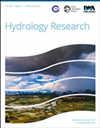流域和气候对河流悬沙输运时空变化的影响
IF 2.4
4区 环境科学与生态学
Q2 Environmental Science
引用次数: 0
摘要
悬沙浓度(SSC)是水资源管理的重要属性。然而,气候和流域特征之间的相互作用控制着河流中SSC的时间变化尚未完全解决。研究的目的是评估这些变量如何影响大陆尺度上南中国海温度动态的空间和季节变化。本文分析了美国120个站点1971-2000年近10年的日SSC (mg/l)和站点属性数据。每年和每一季都制定和应用了南冰流动态的新指标(幅度和频率)。对每个普通最小二乘(OLS)回归模型建立地理加权回归(GWR)模型,并对GWR系数进行生态区域分析。土地覆盖、降雨和侵蚀力、基流指数和土壤质地是OLS模型中最常见的变量。GWR系数在整个大陆上表现出显著的变化。农业覆盖与低频率SSC事件呈正相关,而城市和森林覆盖预测高频率SSC事件,除了沙漠地区。PPT30除西海岸海洋森林外,对SSC强度总体呈负向预测。这些关于集水区和气候控制的研究结果将支持未来SS运输动力学的预测模型。本文章由计算机程序翻译,如有差异,请以英文原文为准。
Catchment and climatic influences on spatio-temporal variations in suspended sediment transport dynamics in rivers
Suspended sediment concentration (SSC) is an important attribute for water resources management. However, the interactions between climate and catchment characteristics that control the temporal variability of SSC in rivers are not fully resolved. The study aim is to evaluate how these variables influence spatial and seasonal variations in SSC dynamics at a continental scale. Daily SSC (mg/l) and site attribute data from 120 sites (USA) with minimum 10 years of record (1971–2000) were analysed. New indicators of SSC dynamics (magnitude and frequency) were developed and applied annually and seasonally. Geographically weighted regression (GWR) models were created for each ordinary least squares (OLS) regression model, and GWR coefficients were analysed by ecoregion. Land cover, rainfall and erosivity, baseflow index and soil texture were the most common variables in the OLS models. GWR coefficients displayed significant variation across the continent. Agricultural cover was positively associated with low frequency SSC events, while urban and forest cover predicted higher frequency events, except in the desert areas. PPT30 was generally a negative predictor for SSC magnitude, except the marine west coasts forests. These findings on catchment and climate controls on SSC will support future predictive models of SS transport dynamics.
求助全文
通过发布文献求助,成功后即可免费获取论文全文。
去求助
来源期刊

Hydrology Research
Environmental Science-Water Science and Technology
CiteScore
5.30
自引率
7.40%
发文量
70
审稿时长
17 weeks
期刊介绍:
Hydrology Research provides international coverage on all aspects of hydrology in its widest sense, and welcomes the submission of papers from across the subject. While emphasis is placed on studies of the hydrological cycle, the Journal also covers the physics and chemistry of water. Hydrology Research is intended to be a link between basic hydrological research and the practical application of scientific results within the broad field of water management.
 求助内容:
求助内容: 应助结果提醒方式:
应助结果提醒方式:


